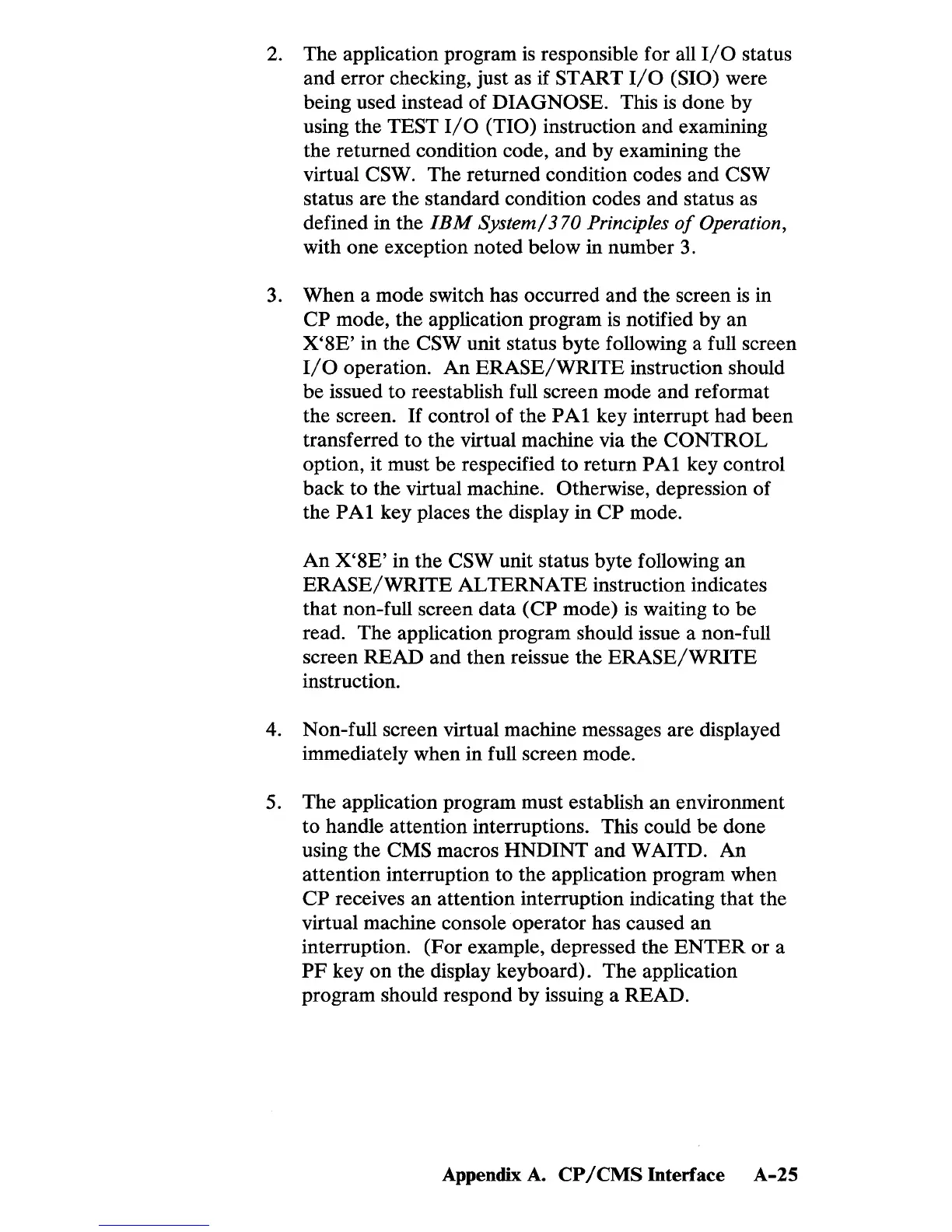2. The application program
is
responsible for all
I/O
status
and error checking, just
as
if START
I/O
(SIO) were
being used instead of
DIAGNOSE. This
is
done by
using the
TEST
I/O
(TIO) instruction and examining
the returned condition code, and by examining the
virtual
CSW. The returned condition codes
and
CSW
status are the standard condition codes and status as
defined in the
IBM
System/3 70 Principles
of
Operation,
with one exception noted below in number 3.
3.
When a mode switch has occurred and the screen
is
in
CP
mode, the application program
is
notified by an
X'SE'
in the CSW unit status byte following a full screen
I/O
operation.
An
ERASE/WRITE
instruction should
be issued to reestablish full screen mode and reformat
the screen.
If
control of the
PAl
key interrupt had been
transferred to the virtual machine via the
CONTROL
option, it must be respecified to return
PAl
key control
back to the virtual machine.
Otherwise, depression of
the
PAl
key places the display in CP mode.
An
X'SE'
in the CSW unit status byte following an
ERASE/WRITE
ALTERNATE
instruction indicates
that non-full screen data
(CP
mode)
is
waiting to be
read. The application program should issue a non-full
screen
READ
and then reissue the
ERASE/WRITE
instruction.
4. Non-full screen virtual machine messages are displayed
immediately when in full screen mode.
5. The application program must establish an environment
to handle attention interruptions. This could be done
using the
CMS macros
HNDINT
and WAITD. An
attention interruption to the application program when
CP
receives an attention interruption indicating that the
virtual machine console operator has caused an
interruption. (For example, depressed the
ENTER
or a
PF
key
on
the display keyboard). The application
program should respond by issuing a READ.
Appendix
A.
CP/CMS
Interface
A-25
